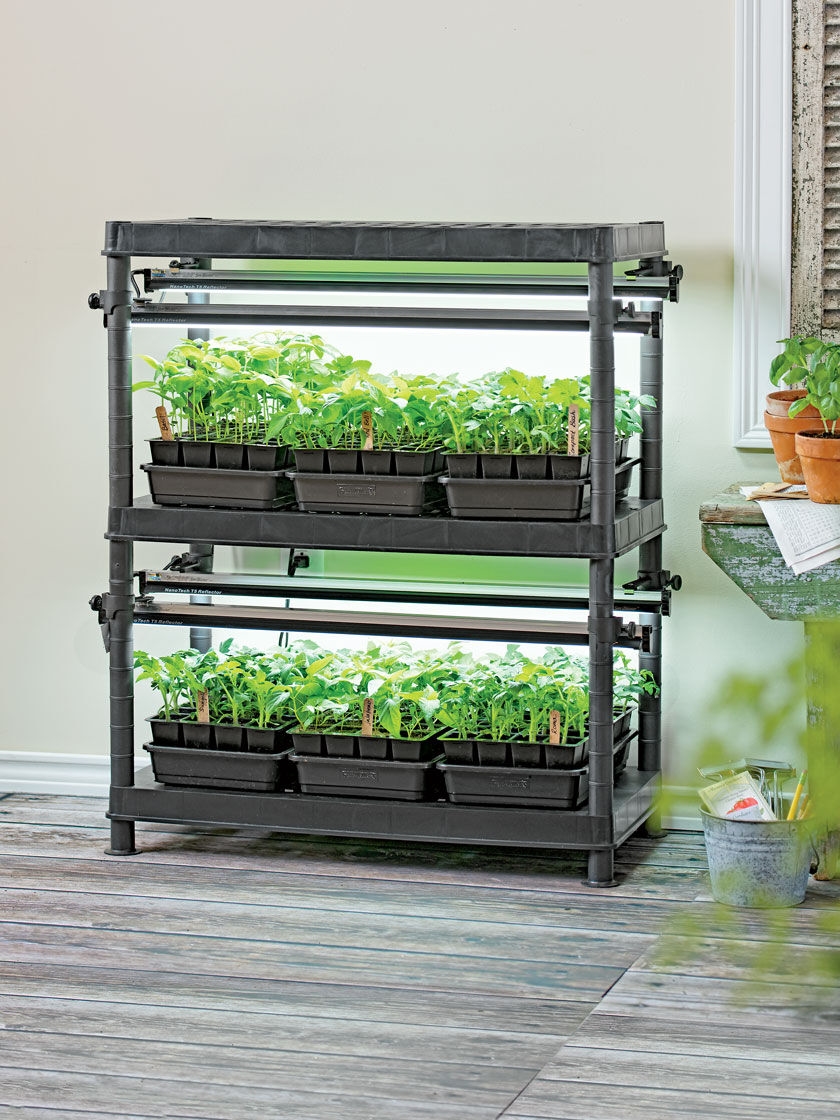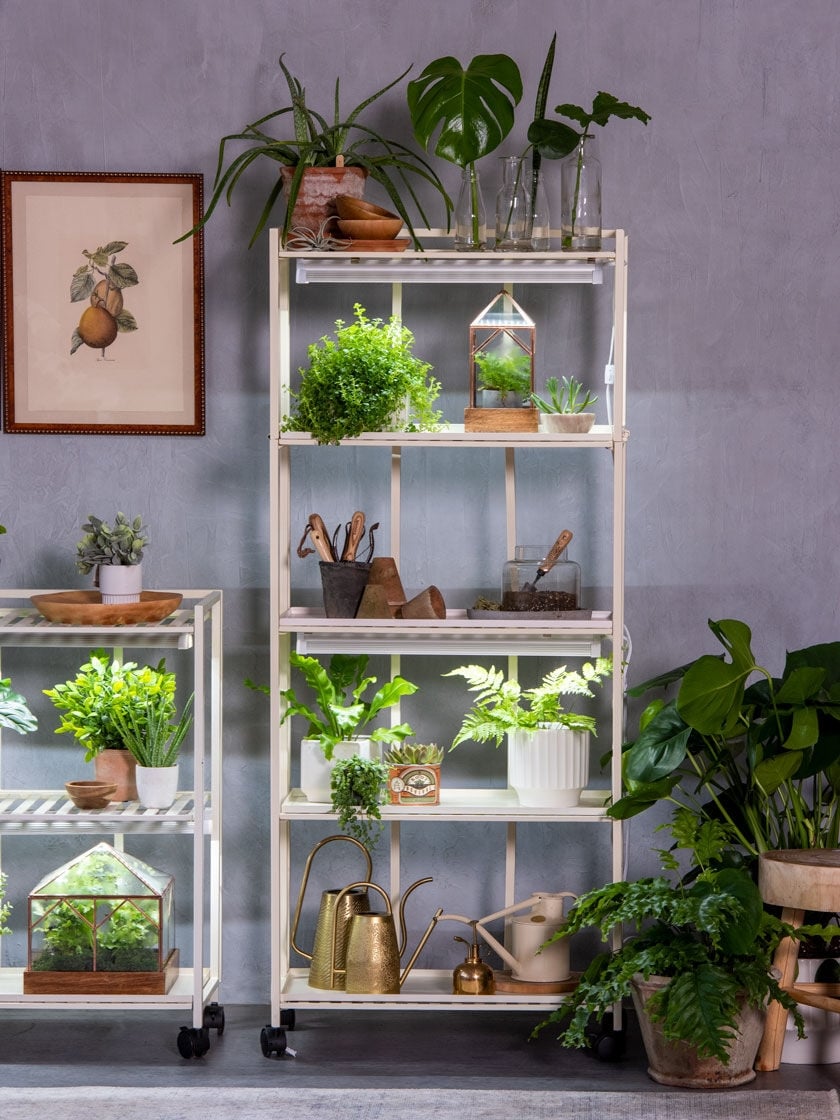Grow Lights for Plants
Need help choosing the best grow lights for plants?
With so many types of indoor garden lights available, knowing which one is right for your indoor plants can be a bit tough.
All plants need light to grow. They transform light into energy through photosynthesis. And how much light they need depends on the plant. Flowering plants and seedlings need higher intensity and several hours of light each day to really grow and thrive.
Green Thumb Tip
It's a good idea to turn your plants to ensure that all sides are exposed to the same amount of light. Give them a quarter turn every week to promote even growth.
For an easy set-up, grow lights with stands offer an efficient lighting solution.
Regular household light bulbs -- called incandescent lights -- aren't efficient for plants for two reasons. First, they don't provide enough of the light spectrum that house plants need. Second, they give off heat which is not good for your plants and they waste a lot of energy.
Types of Grow Lights for Plants
Fluorescent Lights
Fluorescent lights are much more energy-efficient, stay cooler than incandescent bulbs, and offer the blue and red spectrums that will help your plants grow.
Compact fluorescent grow lights cost more than the traditional fluorescent grow light bulb or tube light, but are well worth it. Compact fluorescent lights use about half the electricity of incandescent bulbs, and have a long life span, which saves you money.
Most compact fluorescent light fixtures include a reflective hood. This is the most practical way to make the most of your artificial light.
HID Grow Lights
High intensity discharge (HID) grow lights outperform all other types, offering more lumens per watt.
HID lights include mercury vapor and metal halide bulbs. Mercury vapor lights were the first available on the market. However, they've become virtually obsolete because they don't offer optimum light spectrum for house plant growth and are not nearly as energy efficient as newer HIDs. To take their place, metal halide grow lights provide superior light -- closely matching the spectrum of actual sunlight.
LED Grow Lights
Light emitting diodes (LEDs) is a relative newcomer on the market. Their light output is low. However, LEDs use less electricity than other grow lights for plants and give off less heat. The advantage here is that these lights can be placed close to plants without harming them.
You can customize your light fixture to suit your plants, too. Combine red and blue LED lights to provide your plants with the spectrums they need for exceptional growth and flowering. LEDs are a little pricey, but they'll last for years.




